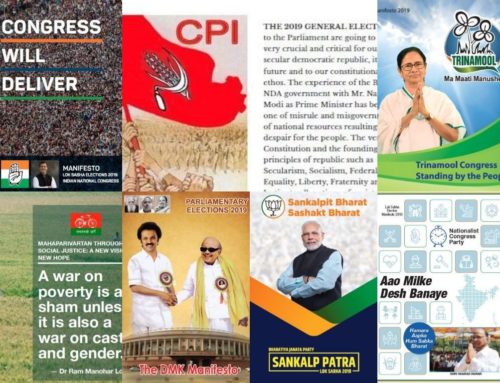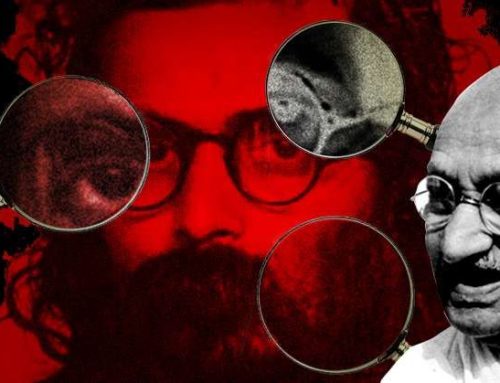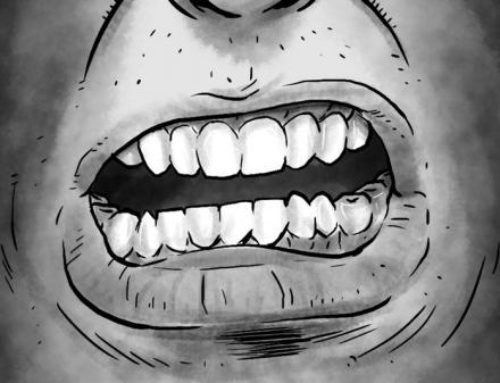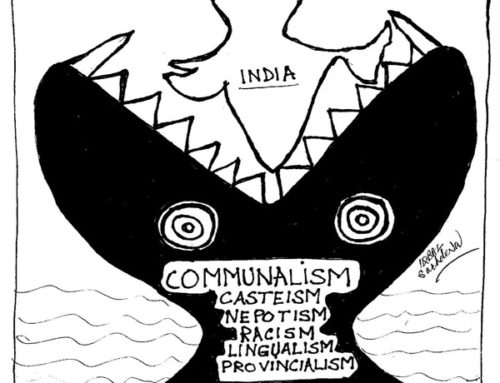In this issue
- Voting choices are based on needs, greed and security – Irfan Engineer
- ‘Being Indian’ through the lens of the arts – Prof. Kamala Ganesh
Voting choices are based on needs, greed and security
Irfan Engineer
The next assembly elections in UP will begin from 11th February 2017 in several phases. The Samajwadi Party in alliance with Congress is hopeful of second term under the leadership of the incumbent Chief Minister Akhilesh Yadav. Chief Minister Akhilesh Yadav recently emerged victorious in the family feud sidelining his uncle Shivpal Yadav and leaving no option for his father but to hand over predominant role in running the Party to him. The SP-Congress alliance is campaigning on the programme of development. The SP traditionally relied on the Muslim-Yadav social alliance with some other OBC also being mobilized. Akhilesh seemed to have won over the bulk of support of the Yadavs as well as Muslims along with a section of youth, campaigning on the issue of development, implementation of welfare schemes like distribution of laptops, service of ambulances for the sick etc.
The BJP, which had won in 71 out of the 80 Lok Sabha Constituencies in the year 2014 in 16th General Elections and two more for its alliance partner – Apna Dal, is fighting a tough challenge to win majority or near majority in this election, let alone repeating its performance in the General Elections. The BJP is trying every trick in the book – rubbishing the claims of development done by the SP Govt. and asserting that it alone is capable of developing UP.
There seems to be a neat division of labour within the BJP. Prime Minister Modi talks of development agenda in order to win over the youth. The Prime Minister also arouses aspirations of the people through jumlas to make a point that those benchmarks were not achieved by the incumbent Govt. and that his Party would fulfill them. For example, number of jobs, investments, infrastructure like roads, electricity etc. Other BJP leaders and RSS – ideological parent of the BJP – indoctrinated leaders have been kicking up every possible issue to communally polarize the electorate since a while in run up to the Assembly elections. BJP MP Hukum Singh claimed that Hindus were forced to migrate out of Kairana, a Muslim majority town in Shamli, by Muslim gangsters and their extortion racquet. Sakshi Maharaj has been problematizing higher population growth rate of Muslims which, according to them would demographically marginalize Hindus. Sangeet Som and Suresh Rana, BJP MLAs from western UP stigmatized Muslims as cow slaughterers and supported the lynch mob of Dadri killing Mohammed Akhlaq and seriously injuring his son. They have been stigmatizing Muslim youth as eve-teasers, entrapping Hindu women into marital alliances for sexual exploitation and demographic advantage. BJP leaders have been exploiting the issue of triple talaq and promising Uniform Civil Code as a measure to “Hinduize” the Muslims. BJP has raised the issue of Ram Mandir in Ayodhya in order to assert the political hegemony of “Hindus” undermining the Constitutional pledge of equal citizenship.
Demonizing the Muslim community has led to high occurrence of communal violence in UP. The state of UP has the dubious reputation of highest number of communal violence every year and particularly as election approaches. There were several instances of communal violence, particularly in the western region of UP since 2013 Muzaffarnagar riots which resulted in 64 deaths and displacement of about 150,000 Muslims. In the year 2016, of the 8 deaths were reported in media monitored by CSSS in communal riots all over India. As many as 6 took place in UP alone. UP also returned highest number of incidents of communal violence reported in the media in the year 2016 – 18 out of 62. Most of these riots were in Western UP. Communal violence had led to rupture in the social fabric in Western UP, particularly between the jats and the Muslims. BJP leaders have been accused of abeting, instigating and/or leading the riots, e.g. Sangeet Som in Muzaffarnagar and Ismaria Choudhary in Bijnor riots.
Projecting Muslim community as an existential threat to Hindus, the BJP intends to position itself as the defender of “Hindu interests” and mobilize votes of all castes without jeoperdizing caste based hierarchy and hegemonic interests of elite of upper castes. In fact, by posing Muslims as existential threat to Hindus, the BJP undermines the struggle of the dalits and the oppressed sections of OBCs for equality and blunts their consciousness despite having equal political rights guaranteed by the Constitution. The BSP is trying to achieve social alliance of Dalits and Muslims by distributing large number of tickets to Muslim leaders – over 98 out of 403 seats (more than 24% of seats) even though Muslims constitute 19% of the population.
Visit to Western UP
Our visit to Western UP on 4th and 5th February 2017 was undertaken to understand the electoral process, mobilization of communities and its impact on inter-relations between various communities. The exercise was neither to survey nor to predict electoral outcomes. We visited and talked to members of various castes and communities in groups to understand their perspectives and issues they thought were important influencing their voting choices.
The notion that Muslims constituted one community or the community behaved as a vote bank melted away in no time. The community neither voted as a vote bank in last elections nor did it appear it would do so in this election. The Muslim community is as diverse as any other community is – along caste lines as well as class lines and their electoral choices are influenced by their social location and not only on their religion. In the last Assembly elections, Suresh Rana, BJP won the Assembly elections from Thana Bhavana Constituency in Shamli District even though Muslims constitute about 55% of the electorate with a narrow margin of 265 votes! Muslim votes were divided between Rashtriya Lok Dal’s Abdul Waris Khan and Samajwadi Party’s Kiran Pal. The Muslim community is divided along caste lines as well. Muslims are from Rajputs, Jats, Gujjars, and other backward biradaries among Muslims.
Talking to various Muslim and Jat members of the community, it appeared that they have put the communal riots in 2013 behind them. The Jats said they were misled by the BJP leaders and recalled long history of fraternal bonds between the two communities. They remembered participation in each other’s marriages, last rites and festivals and had shared cultural ethos. The shared cultural ethos includes keeping women in veil (the nature of veil may change), no marriages within the village, restricted liberties to women, etc. Both the communities were mobilized together on issues faced by the farmers.
The members of Jat community were perturbed by the demonetization in particular and marginalization of the peasantry in general. The fundamental issue for them was un-remunerative minimum support prices for farm produce or lack of it. Waiver of loans did not attract the Jats we talked to, on account of their inability to pay back loans as the incomes of the farmers had taken a big hit in the last 2-3 years. The Jats were certainly not inclined to support the BJP. They seemed to be divided on whom they would vote for – Rashtriya Lok Dal (RLD) seemed to the choice of majority but some were also supporting Sudhir Panwar, SP-Congress alliance candidate and a Jat himself.
The Muslims we talked to too seemed to have at least for now, and for the purpose of this elections, put the communal conflict and violence associated with it behind them. They too, like the Jats did not buy the propaganda that demonetization would ultimately lead to benefits of any significance to the nation or the economy and underlined the hardships caused by the measure. We talked to two groups of Muslims – one were group of Rajput Muslims and some dalit Muslims. The Rajputs were staunchly supporting the Rashtriya Lok Dal party and desired Jat-Muslim unity to revive the RLD’s fortunes as in the past.
However, there was equally strong voice in favour of SP-Congress alliance supporting the developmental work done by Akhilesh’s Govt. When asked what development the Govt. had done, they pointed out towards distribution of laptops, ambulance service, electric supply and better roads. Abdul Waris Khan’s supporters were equally confident that Muslims would vote for them. Waris Khan is a Rajput Muslim contesting from the BSP. In the last elections in 2012, Waris Khan lost to BJP’s Suresh Kumar Rana but polled 50001 votes whereas Suresh Kumar polled 53,719 votes and Ashraf Ali Khan of RLD had polled 53454 votes. Waris Khan won in 2007 contesting on RLD ticket. In 2012, Suresh Kumar of BJP won only by a thin margin of 265 votes as Muslim votes were divided between Waris Khan and Ashraf Ali Khan – both being Rajput Muslims.
The poorer and labouring class Muslims seemed to be supporting the BSP – seen as a dalit party. The upper caste Rajput Muslims nurture a separate community feeling and solidarity with the land owning Jats and Rajputs when there is absence of communal polarisation whereas they seek solidarity of the backward caste Muslims when communal polarization is heightened.
When we visited SP-Congress alliance candidate – Sudhir Panwar’s (a Jat) election tent in Thana Bhawan, we saw Jats, Muslims, Sainis in the tent planning for election campaign. The Muslims in the tent were sure overwhelming majority of them will be voting for the Alliance. The Jats in the tent too were confident of the Jats voting Sudhir Panwar who was contesting on the plank of communal harmony and peace as one amongst many others.
When we visited the upper caste Hindus – Sainis and Rajputs, their issues in the elections were different than the Muslims or Jats we met. They were problematizing regional issues. Western UP was kept backwards by the ruling dispensation as they were largely from the Eastern UP. They felt left out of the development agenda of the state. All the jobs went to the youth from Eastern UP and particularly to the Yadavs and Muslims. All the state contracts, educational institutions, and other institutions were cornered by the other regions being represented by the politicians of the ruling clan in general and Yadav-Muslims in particular. They felt alienated and marginalized from the state power (though they appeared much better off in reality). The youth problematized reservations in jobs, education and other affirmative action. To them it was unfair discrimination against the upper caste youth and reservations should only be based on economic criteria. They supported BJP and trusted that BJP’s victory would lead to development of Western UP on priority basis as political leaders from the west would dominate. There was no talk of justice or equality – only perceived injustice and aspiration of reversing the equations – belief that BJP’s victory would lead to reverse discrimination. Now they needed to benefit from political nepotism with their leaders being in power. According to them, demonetization was a good action though it temporarily led to problems. In the long run, demonetization would check corruption, black money and counter terrorism.
Conclusion:
The above discourse shows that no community or caste is a vote bank. There is diversity and voting choices are dependent on variety of factors, including religious, socio-cultural and economic factors. Social location of the individual influences voting choices and not religion alone. There are three factors that can influence voting choices – need, greed and security. Those whose basic human needs are not met, they are dependent on welfare. State provides only a tiny fraction of social welfare needed by large sections of poor in the country. Through whom social welfare can be accessed may determine the choice of the needy voters – dalits, adivasis, landless, etc. Those whose needs are fulfilled, need social networks to access their aspiration for upward mobility and more riches and privileges. Which social network helps this objective may determine electoral choices for some. Victims of communal and caste violence and high handedness of security forces vote for the party or leader that promises security to them. These factors were playing the voting choices of the people we met and interacted with.
* * * *
‘Being Indian’ through the lens of the arts.
A workshop at Therounda Phada 16-18 Dec, 2016
By Kamala Ganesh
Recent discourses and debates around ‘Being Indian’ have stirred passions. They have also created unease among many for whom Indianness is a part of their being; people who had never felt it necessary to articulate, analyse or prove it for anyone. Art is a medium that stays away from literalness. It suggests, evokes or inspires, speaks in metaphors and codes in symbols; using a sledgehammer is not the usual style. How do artists think about being Indian and how does their work engage with this idea? Neela Bhagwat, noted Hindustani classical musician, musicologist and writer wished to explore this theme by bringing together artists from various disciplines in the sylvan surroundings of the Raut family estate in village Theronda Phata near Alibag. The relaxed camaraderie over two days led to unusual and lively expressions of what is ultimately an intangible entity, clothed in the ominous terminology of ‘nationalism’. As Neela and I, along with her student Elroy Pinto prepared for the workshop, and discussed how I should go about my task as ‘sutradhar’, I could see that she was reluctant to fully structure it before hand. Artists speak through their work, she said. We should give each artist space to present their own work. In the process, ideas of Indianness will emerge. Indeed, this was what happened on Dec 16, 17 and 18, 2016, when seven of us along with Elroy, Sairandhari Raut and Sharmila Raut assembled in Theronda Phata.
In the first round of discussion, almost everyone started by expressing puzzlement, discomfort or even downright hostility to the idea that is current these days – that they should all somehow have a clear and undivided sense of being Indian.
Satish Kashalkar, poet and writer in Marathi, contemporary of and fellow traveler with Arun Kolhatkar and Namdeo Dhasal brought in his sharp insights on the changes Marathi literature underwent in the 1960s and 70s to democratize and to free itself from its overpowering Brahmanical legacy. Worldwide movements at that time from anti Vietnam protests to hippie counter culture had an influence on this group of writers and poets. In the name of nationalism, hegemonic powers had defined and put their stamp on our literary heritage. Indianness is not a birthright, it has to be earned, he said. He read from his poetry and essays.
Vishnu Mathur, an alumnus of FTII and a documentary, short and feature filmmaker, spoke on his bemusement with the theme. In his films, characters were fleshed out without embedding them in identities of caste or religion or ethnicity. Eventually he came to a position that a thread of universalistic and diffuse spiritualism is the defining characteristic of Indianness. He and his spouse Lakshmi cannot imagine living anywhere else but in India, which gives them all that they need and want. His film The Flying Bird, documenting the life and music of veteran Carnatic veena player Savitri Rajan, was screened.
Jyoti Kolte, visual artist known for her experimental approach, and her rootedness and commitment to her local Bandra community, spoke of her search for that which was Indian and truly universal at the same time. When she was a very young person, she was a-religious, proud of the national anthem, had a yen for Indian aesthetics and Indian philosophy. As she grew, she realized that one can discover oneself by being open and allowing things to happen – through yoga, music, dance, meditation, chanting. She presented examples of her work through slides.
Sanjukta Wagh is a trained Kathak dancer and teacher who also choreographs and performs in a contemporary idiom. She spoke of the pedagogy of classical Indian dance. It is rigid. It gives overwhelming importance to the guru-shishya parampara, which is authoritarian and hierarchical. She experiments with Kathak as a form and also with the traditional content of ‘nayika bhav’ with her innovative and unexpected interpretations of epic heroines like Radha, Gandhari and Pootana. She presented some of her pieces including a powerful excerpt from ‘Rage’, on Gandhari, the princess who bindfolded herself in rage when she discovered that the man she married was blind.
Tanvir Singh Sapra, a student of Neela, is from a home where his parents were immersed in Sufiana Kalam. This upbringing along with a passion for singing Gurbani has imbued his musical sensibilities with the deep colour of devotion which he sees as the basis of love for fellow-human beings. One has to come back home, to one’s roots. It’s like coming back to the sam at the end of the sixteen beat wanderings in the taal cycle. The workshop was energized by his singing shabads from time to time. In his spare time, Tanvir also is a student of engineering!
Neela Bhagwat has a rich background in literature and music. She writes in Marathi, translates, and is curious about India’s linguistic diversity. Although her music is rooted in the Gwalior gharana, to which she is uncompromisingly committed, she has created a dialogue with various genres, like abhangas, bhajans and tappa. Her concerts include or sometimes are exclusively devoted to the untouchable saint poet Chokha Mela, Kabir or Meera. She has performed in jugalbandis with Carnatic singer Aruna Sairam. Neela has kept herself open to the diversity of art forms in this country and sees them as interconnected expressing a holistic unity.
I myself, as an artist, am an amateur. I trained for many years in Carnatic music but now it is mostly humming in private! However, as a social anthropologist, my professional ear is tuned to recognizing cultural diversities and framing them into categories, processes and structures. The concept of diversity needs to be seen in tandem with processes like syncretism, hierarchy and domination. Nationalism too has both a benign and malevolent aspect. Anti colonial nationalism that mobilized the Indian masses to fight for freedom had emancipatory aspects. Constitutional nationalism, as enshrined in the constitution of independent democratic, socialist and secular India was aimed to be inclusive of all diversities and geared towards nation building. In course of time the initial suspicion of particularistic identities of region, language and religion (what were called sub nationalisms) evaporated. Our idea of nationalism became open enough to render it compatible with various other identities. In fact recent meditations and reflections on identity by Stuart Hall, Zygmunt Baumann, Benedict Anderson and others point to its essential and ultimate ephemerality, multiple and simultaneous, not fixed, but constructed and reconstructed, forever changing. All identities, including nationalism, are subject to this.
Over centuries, in India, and in the subcontinent in general, overall we have learnt to live, and appreciate social and cultural differences, despite some violent confrontations. The scope and depth of diversities here is greater than in most countries and even regions. In the cultural disciplines – art, architecture, music, dance, theatre, literature, poetry, philosophy – the diversities are also intricately interrelated, and there is an underlying, interconnecting thread. At the same time, the mode of integration of diversities, be they of human beings or systems of knowledge, is often hierarchical. “You will be accommodated in our system, but placed there, down below.” This Indian model – plural but hierarchical – with all its flaws was still better than the new nationalism, which insists on negation of all identities except that of Hindutva.
The artists all felt the pressure and threat from the demand of the new, exclusive nationalism and rejected it, but did not thereby reject the concept of Indianness in their art and life. Neela reminisced over the moment this hit her sharply, when she felt an unexpected pull as an Indian to communicate her art responsibly to foreigners. It was during a concert in Belgium where she was singing a bandish on Radha Krishna’s love play. She had to introduce the piece and she was in a quandary as to how to explain Krishna’s amorous adventures and Radha’s anger at his making love to another woman. She was disturbed. In India, she realized, there would be no need to explain. She felt Indian that day in a way that she had never felt in India. A young European girl in the audience told her later, isn’t this true of any man? And sometimes true of women too? “I realized that her emotional world was similar to mine. Music has the power to bridge different worlds.” For Neela, Khayal sangeet partakes of the spirit of sant vani. It is spiritual at base. Its beauty is what yoga calls unity of body, mind and spirit. It can be sung in any Indian language, but not in a European language. Khayal sangeet can cross the barriers of space and time. But it is Indian. But this ekatva has been damaged by divisive social structure. Divisiveness is palpable in society, individual life, and in art. Neela urged the artists to engage seriously with Indianness.
As the sun set on the deliberations each evening, the group of artists relaxed under the coconut and areca nut trees. Singing old Hindi film songs has unerring power to evoke a benign if sentimental Indianness of romance and melancholia. Returning from Alibag to Mandva jetty, we passed the museum of Dashrath Patel’s work. Patel was a multi-dimensional artist – painter, ceramist, designer, photographer who had studied at the feet of masters like Cartier Bresson and Debi Prasad Roy Chowdhury and worked with designer Charles Eames, artist Harindranath Chattopadhyay and dancer Chandralekha. Inside the museum, were prominently displayed these lines of Dashrath: “For me Indianness has always been the quality of light and a very special kind of luminosity. It is also a quality of great surprise the way light can bring you a fresh experience of something each time”. Who but an artist could transform the unbearable concept of territorial nationalism into a play of the elements and the senses?
Kamala Ganesh is a Senior Fellow of the Indian Council of Social Science Research. She was formerly Professor and Head, Dept. of Sociology, University of Mumbai.






